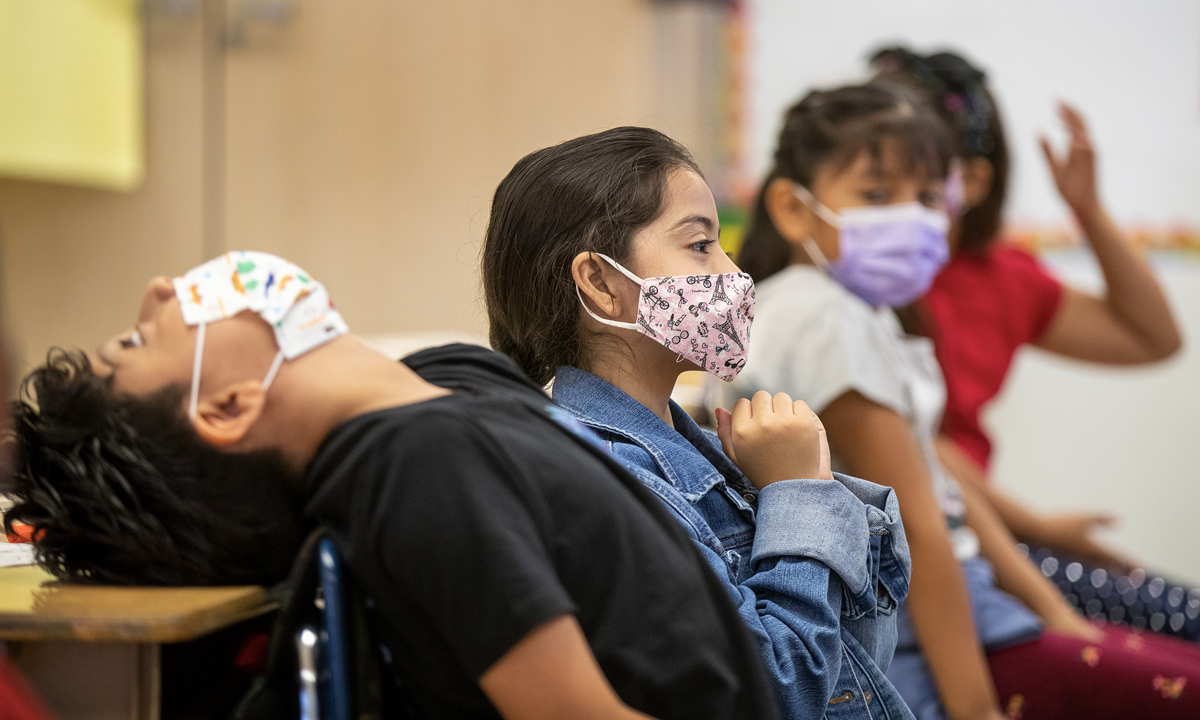Schools Face ‘Urgency Gap’ on Pandemic Recovery: 5 Takeaways from New Study
Districts and communities aren’t “fumbling the ball,” says CALDER’s Dan Goldhaber, but they need to step up their game to get students back on track

Get stories like these delivered straight to your inbox. Sign up for The 74 Newsletter
Updated November 6
New research on post-pandemic student achievement presents a sobering picture, offering a reality check for anyone who might think recovery is proceeding apace.
The study, from CALDER at the American Institutes for Research, NWEA and Harvard University, suggests school districts should do more. “We need more kids to get more hours of interventions,” said CALDER’s Dan Goldhaber.
Taken together, the dozen mid-to-large sized school districts investigated enroll more than 600,000 students across 10 states in every region in the country. And they serve higher proportions of students of color and students attending high-poverty schools than national averages. The districts range from Alexandria City Public Schools in Virginia to Dallas Independent School District, Guilford County Schools in North Carolina, and Tulsa Public Schools in Oklahoma.
Here are five big takeaways from the research:
1. Districts stopped the bleeding in the 2021-22 school year.
Based on achievement tests administered between fall 2021 and spring 2022, the new data show that districts for the most part put an end to student achievement declines in math and reading relative to pre-pandemic levels.
2. Beyond that, though, results are mixed.

On average, math and reading test score gains during the 2021-22 school year didn’t move past pre-pandemic levels, with “little evidence of systematic catch-up” to where districts were before COVID hit. Students in a few elementary grades improved substantially in math, but beyond a few areas, researchers didn’t find a lot of compelling evidence of recovery in other subjects or grades.
In most cases, the positive effects were small — certainly less than what one might expect from such a large, national effort. Goldhaber told The 74, “I thought that there would be more clear, standout, home-run initiatives. And maybe naively I thought that.” While he and others envisioned the research showing strong evidence that, for instance, districts’ extended learning time or tutoring initiatives “are really moving the needle,” in reality, he said, “the results are much more mixed than that.”
3. Two big problems: implementation and scale
Researchers found that in many districts, remediation initiatives planned for the fall of the 2021-22 school year were still in the process of starting as late as last spring — and in some cases, they hadn’t even launched. “We as a country have never tried to do anything like this at scale nationwide,” Goldhaber said. “And so that would be challenging no matter what.” But putting such a comprehensive system in place with a low national unemployment rate may be making it even harder, he said. “Districts may be competing with each other, both for talent and to bring in new programs. But they get much, much harder when you’re doing this for many, many students.”
And even when remediations were in place, researchers found, unforeseen events like teacher absences during Delta and Omicron surges — and chronic student absences — reduced the planned “frequency and dosage” of interventions. In a few schools, administrators said, teachers even told them they feared that sending students to pull-out groups “would increase everyone’s risk of infection.” One district leader said challenging student behavior made it harder to deliver remediation, while another said, “If behavior is the thing that students need to get going [in school], maybe behavior should be the intervention.”
4. Schools share the blame with parents, who may have an inaccurate picture of their children’s post-Covid achievement.
Researchers interviewed district leaders, who said they faced several challenges, including staffing and capacity, as well as scheduling headaches. But a major problem was their ability to consistently engage targeted students and their parents, which will be critical going forward. Goldhaber said “hold-harmless” post-Covid grading policies may give parents a too-rosy picture of their children’s achievement.
The researchers recommended that districts and states do more to inform families “about how students are doing now, whether they are on track for recovery, and what can be done if recovery does not look like it is happening at an adequate pace.” Goldhaber said grades “are probably the best direct signal that parents get about how their kids are doing. And so if the grades don’t end up lining up well with some objective measures, and parents are taking the grade as the signal, then they might be right to think things are O.K.”
5. Time is running out on closing gaps.
The researchers noted that at this pace of recovery, according to recent findings, most students in grades 3 to 8 will need a minimum of three school years to fully get back up to speed, with upper elementary and middle school students potentially needing much longer. While a few of the districts studied are on pace to make up for lost progress, researchers said, others “will not reach pre-pandemic levels without significant acceleration” of their efforts.
“It’s not that the programs aren’t working, for the most part,” Goldhaber said. “I think it is that the scale and intensity of the treatments are less than what was planned — and less than what would be needed to see large gains.” Given that federal ESSER aid must be committed by 2024 and spent by 2025, schools are running out of time to offer effective interventions.
More broadly, Goldhaber cautioned that the study shouldn’t leave readers with the impression that “districts are just sort of fumbling the ball. I don’t think that’s the case.”
But he said districts and communities need to step up their game, with more tutoring and parent outreach, among other things.
For their part, parents need to understand that more needs to be done. “There are these national surveys that are suggesting that parents think things are more or less back on track,” Goldhaber said. “And I think there’s good evidence that kids are not yet back on track. So we’ve got what I would say is an ‘urgency gap.’”
Disclosure: Walton Family Foundation and Carnegie Corporation of New York provided financial support to this paper from CALDER and The 74.
Get stories like these delivered straight to your inbox. Sign up for The 74 Newsletter


